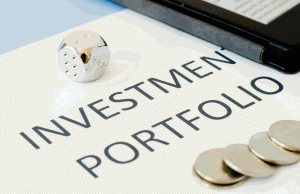Conducting a Mid-Year Investment Portfolio Checkup? Avoid These Mistakes
Jun 28, 2015 • Written by Paul Staib | Certified Financial Planner (CFP®), MBA, RICP®
Blog Home » Asset Allocation » Conducting a Mid-Year Investment Portfolio Checkup? Avoid These Mistakes

When it comes to checking up on your portfolio, a policy of benign neglect invariably beats too much monitoring. Investors who pay attention to their portfolios’ daily values may find themselves  berating themselves during the market’s periodic downdrafts or congratulating themselves too much when their balances are inflated. Worse, too-frequent portfolio monitoring can lead investors to tinker with their portfolios’ positioning and holdings more than is desirable or necessary. They might be inclined to adjust their stock/bond/cash mixes based on short-term macroeconomic events, for example, or kick an investment to the curb after just a short period of underperformance. Taking a long view is usually more helpful. For most investors, a quarterly, semiannual, or even annual portfolio checkups may be sufficient.
berating themselves during the market’s periodic downdrafts or congratulating themselves too much when their balances are inflated. Worse, too-frequent portfolio monitoring can lead investors to tinker with their portfolios’ positioning and holdings more than is desirable or necessary. They might be inclined to adjust their stock/bond/cash mixes based on short-term macroeconomic events, for example, or kick an investment to the curb after just a short period of underperformance. Taking a long view is usually more helpful. For most investors, a quarterly, semiannual, or even annual portfolio checkups may be sufficient.
If a midyear portfolio review is on your to-do list, here are four additional mistakes (in addition to checking up too frequently) to avoid.
Mistake 1: Basking in the Glow of the Wealth Effect
If you have a sizable stock position and you haven’t checked your portfolio’s value for a while, it’s a good bet that you’ll be pleasantly surprised when you look at your balance. Even though stocks have encountered some turbulence in the past several weeks, the past several years have been tremendously rewarding for both stock and bond investors. But with enlarged portfolio balances comes the potential for behavioral errors. Accumulators may think they can pull back on their savings rates, while retirees may feel they can safely take higher payouts. In reality, however, higher market valuations mean they should be increasing their savings rates and reducing spending. After all, future portfolio growth may in fact come more from investors’ own contributions and less from market appreciation.
Smooth sailing for both stocks and bonds can also fuel investors’ appetite for risk-taking with their portfolios. By many measures, volatility in the equity market has been quite low. The S&P 500 hasn’t had a losing quarter since the fourth quarter of 2012, and even then the loss was minor. Not only does that make it tempting to let winners run and leave an ever-growing equity stake unchecked, but investors might also be inclined to build new positions in outperforming but higher-risk market sectors, thereby bumping up their portfolios’ volatility potential at what may be an inopportune time.
Mistake 2: Under Appreciating Defensive Players
In a similar vein, very strong returns from high-risk asset types tend to undermine the case for defensive portfolio components, whether stock or bond. It’s easy to forget the market downdraft of 2008, when many such defensive players more than earned their keep. High-quality bonds, with their meager yields and low-single-digit five-year returns, are the ultimate “what have you done for me lately?” investment; it’s easy to overlook their merits as shock absorbers in an equity market sell-off. Additionally, many defensively minded equity funds have also generally disappointed during the rally but would likely hold up well during a stock market shock.
Mistake 3: Getting Lost in the Forest
When using a detailed portfolio management tool, it’s easy to get distracted or overwhelmed by all the data. You might get caught up comparing one holding’s year to date return with that of another, for example, or spend an inordinate amount of time hunting for the reason why your cash weighting went from 4% to 7%.
To help avoid that trap, start your portfolio review by asking the basic question, “Am I on track?” Tracking your total portfolio balance and savings/withdrawal rate are the first things to assess. If you’re off track on this front, portfolio tweaks might not move the needle; you may need to adjust your savings rate (or your withdrawal rate, if you’re retired) to improve the viability of your plan.
When it comes to your portfolio, it’s also valuable to think big picture. Evaluating whether you have an appropriate asset allocation (that is, the allocation towards stocks, bonds, and cash) is the most important determinant of your overall performance. Compare your actual weightings with those of your targets and adjust accordingly.
Mistake 4: Not Focusing on Tax-Sheltered Accounts for Changes
If it turns out that you need to tweak your portfolio be careful not to trigger any unwanted tax consequences along the way. That’s particularly important these days, as many investors have substantial gains in their equity holdings; selling highly appreciated positions from their taxable accounts is apt to trigger a capital gains bill. That means that if you need to reduce the importance of a given asset class, sector, or investment style in your portfolio, you’re better off doing so by trimming positions in your tax-deferred or Roth IRA accounts. Using those accounts you won’t face any tax consequences as you reduce the value of your most appreciated holdings.

Paul Staib | Certified Financial Planner (CFP®), MBA, RICP®
Paul Staib, Certified Financial Planner (CFP®), RICP®, is an independent Flat Fee-Only financial planner. Staib Financial Planning, LLC provides comprehensive financial planning, retirement planning, and investment management services to help clients in all financial situations achieve their personal financial goals. Staib Financial Planning, LLC serves clients as a fiduciary and never earns a commission of any kind. Our offices are located in the south Denver metro area, enabling us to conveniently serve clients in Highlands Ranch, Littleton, Lone Tree, Aurora, Parker, Denver Tech Center, Centennial, Castle Pines and surrounding communities. We also offer our services virtually.
Read Next
Retirement Risks … and Mitigation Strategies
• Written By Paul Staib | Certified Financial Planner (CFP®), MBA, RICP®
A critical component in the development and implementation of a comprehensive retirement plan includes the assessment and mitigation of risks….
8 Behavioral Biases That May Hurt Your Investments
• Written By Paul Staib | Certified Financial Planner (CFP®), MBA, RICP®
Do you feel the pain of loss more than the joy of gains? How to separate emotions from investing. It’s…
